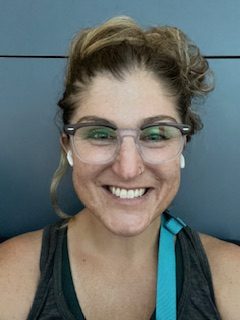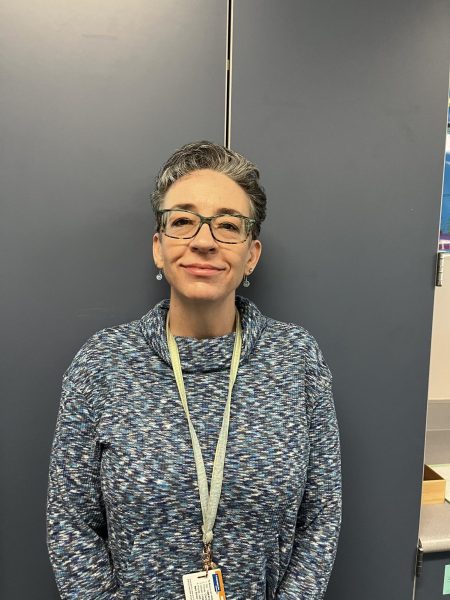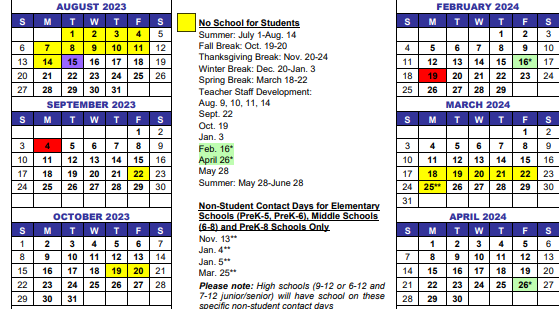Teacher-staff development days are days that are set aside by Jefferson County for teachers and staff to do anything they need to do on their own or as a team without students in the building. Jeffco High schools currently have 10 teacher-staff development days while elementary, middle, and K-8 schools have 14.

In a large school like Arvada West, teachers’ opinions vary on whether high schools deserve more or less time to grade work, create lesson plans, and talk with their fellow teachers about the subject, during these days.
For most teachers, the days can be really helpful but, “most or at least half of the day is taken up with required meetings or trainings, like professional development…” says Eryn Gallagher Balding, a Biology and Anatomy teacher.
Despite the time that is spent on these developments and meetings,Balding still believes that there is plenty of time on those days to do work but says, “The thing we don’t have is enough provided time to do our job. I’m not gonna pretend like having summers off isn’t awesome but, the amount of time allotted to the job itself is where I think we need more time.”
Kimberly Swetlic, who teaches 9th and 12th English agrees: “I feel like we have more professional development than we need because most of it, I think, is geared towards first, second, and third-year teachers.” She continues, “Anyone who’s been doing this a while isn’t benefiting a great deal. I would benefit if we had time to work with our content teams and in our classrooms.”
This is probably the common agreement since each teacher has at least one off-block. An off-block can provide very useful time for teachers to grade and plan on their own, but their colleagues don’t have the same off- meaning planning as a team is near impossible. If “no-student contact” days were arranged differently, teachers could have more time to work as a team.
Due to this issue, Swetlic says she uses most of the time these days with her content team in order to make up for the time they don’t usually have together, “Usually we’re meeting with our content teams and maybe we’ll have an hour or something in our classroom.”
Swetlic also pointed out how this time isn’t helpful because of the small amount of time that they usually get to meet, stating how they only get together for 30 minutes a week to plan out ideas. She says that after brainstorming ideas they end up having to do most of the work on their own and then discuss what they did next time the content team gets together.
Overall it would seem like, for Balding and Swetlic, there are plenty of these days with their current structure. While neither of them feels much benefit from these days, History and Geography teacher, Matthew Petrone finds the days to be pretty helpful in his first year at A-West.

Petrone says, “If you want teachers to do an effective job, maybe a couple more days here and there, or adjusting the schedule would be good because we want to be good at teaching.”
Petrone may not agree with Swetlic and Balding on the basis of how many days the school has, but one thing everyone can agree on is just how critical working with their content team can be.
“I think the days that we have set aside to sit down and do good work together can be really productive. We’ve planned out multiple units on days when we’re able to and it just makes for a better teaching experience for the students and the teachers. But also it just leads to a more cohesive lesson, and I would say it makes it less stressful on a day-to-day because you have everything planned out nice and neat,” says Petrone.
Petrone can also agree with Swetlic that the amount of years teaching affects how useful professional development is. “It’s tough because you have teachers that it’s their first year of teaching and they’re just trying to survive the year, and then you have teachers that have been doing it for 30 plus years, and I think it’s hard to get the same message to both people.” He continued, “What a 30-year-plus teacher needs to hear is very different from what a first-year teacher needs to hear. So that one size fits all is hard to do.”
The agreements don’t stop there either. The high school teachers also all have very similar opinions on the fact that elementary, middle, and K-8 schools have four more development days. All three of the A-West teachers recognize that these schools don’t have as much planning time as high schools and believe they deserve the extra time.
“Elementary school teachers never get an hour and a half straight in the day where they don’t have children, and I get that every day,” says Balding.
Similarly, Petrone says- “They just don’t have the same amount of planning time that we do. While I would love to have more days to work, I do understand that they don’t have as much prep time as we do.”
Overall it seems that while staff development days have some flaws, they generally can provide extra time for teachers to plan and work, making their days less stressful and providing students with a break.



